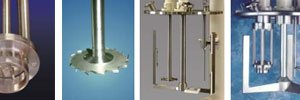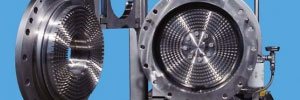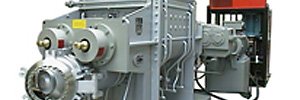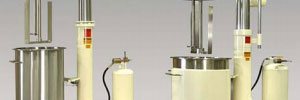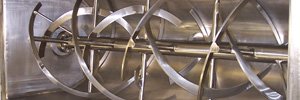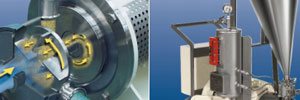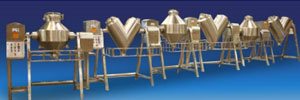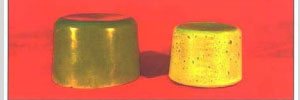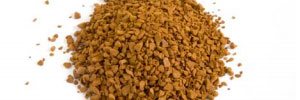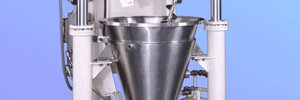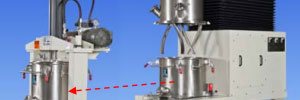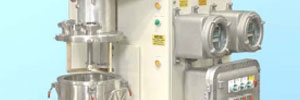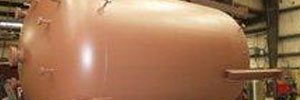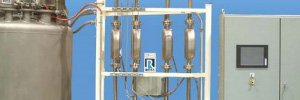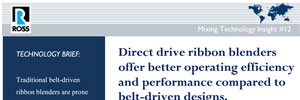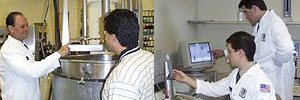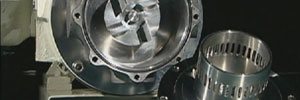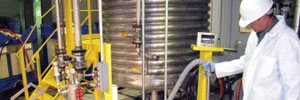Mixing Technology Insights
Mixing Technology Insights offer a brief look into ROSS' products, process expertise and market strengths. The reports delve into how the equipment can be used to improve your process and to add to your bottom line. ROSS strives to provide its customers with up to date information covering new technology in the industrial mixing and blending industry.
Select a specific product, process or market to view a list of related Insights:
Select Product
Select Process
Select Industry
- Mix and ship viscous mixtures in the same container.
ROSS Double Planetary Mixers designed to match standard 55-gallon drums enable manufacturers to produce viscous mixtures right in the shipping container. Advantages include minimal clean-up, waste generation, storage and handling.. - Maximize mixing efficiency with a Planetary Mixer.
This bulletin explores the different types of planetary-style mixers. For enhanced processing efficiency and flexibility in a multi-product mixing operation, consider the Planetary Dual Disperser which can operate as a classic Double Planetary Mixer or as a Planetary Disperser. - Extremely viscous mixtures
Kneaders are well proven and reliable mixers employed in the compounding of extremely viscous mixtures that cannot be processed efficiently in vertical-style agitators such as double planetary mixers. - Tips for selecting the best planetary mixer for your process
This bulletin presents some general guidelines for selecting the most appropriate planetary mixer configuration for a particular application. - Mixing viscous suspensions
Solid-liquid suspensions are prepared in different types of mixing equipment, depending on viscosity and shear level requirements. This bulletin presents some mixer solutions for efficient and consistent dispersion of solid raw materials into a viscous liquid. - Clean design planetary mixers
Contamination in mixing systems can arise from foreign materials in the environment as well as materials within the mixer left from previous batches. In planetary mixers, a number of clean design features are available which help improve ease of cleaning and reduce contamination risks.. - Cost-effective processing of
viscous mixtures
Multi-agitator systems equipped with independently controlled drives are highly efficient at producing good turnover and imparting shear to a viscous batch. In particular, the dual-shaft mixer is a versatile and cost-effective system used for processing a wide variety of viscous formulations. - Advantages of double planetary
mixers over sigma blade kneaders
Many high viscosity materials that are being made on sigma blade kneaders can be processed in double planetary mixers. The advantages of switching to the double planetary mixer design include better cleanability, smaller footprint and lower capital cost. - High-torque, low impact
mixing of viscous composites
Double planetary mixers provide thorough, low impact agitation ideal for intimate mixing of delicate fillers into high viscosity materials. - Improve the performance of
your double planetary mixer.
This bulletin presents some processing techniques for improving the mixing performance of double planetary mixers. - Fast and efficient discharge of viscous, sticky mixtures
Platen-style discharge systems used with change-can design mixers can significantly improve production speed, efficiency, cleanliness and plant safety.. - Mixing dilatant materials
Dilatant materials pose a unique mixing challenge due to their very nature: the greater the shear forces applied to the material, the more resistance is encountered. Heavy-duty, high-torque double planetary mixers operated under comparatively low speeds are ideal for processing shear-thickening mixtures. - Effectively disperse fibers into your viscous mix.
Many fiber-filled composites are high viscosity formulations that require efficient dispersion in a planetary mixer configuration where a number of blade designs and combinations are available. Fiber characteristics and composite rheology are the main factors evaluated in the mixer selection process. - Hybrid planetary mixers
produce high viscosity mixtures with ultra-fine dispersion quality.
Hybrid planetary mixers are utilized for creating fine dispersions in viscous mixtures, typically within the viscosity range of 100,000 to 2 million cP. Intense mixing is applied to the product by constantly advancing a high speed disperser and a low speed stirrer into the batch. Solids are quickly incorporated into the viscous bulk material and agglomerates are dispersed regardless of product flow characteristics. Designs for multiple planetary stirrers and disperser blades are available for more demanding applications. - 5 ways a laboratory double
planetary mixer can save you money
The double planetary mixer is a highly versatile piece of process equipment. At the R&D level, it offers several advantages that can save time and money. This bulletin discusses 5 unique benefits of the double planetary mixer. - Consider the advantages and disadvantages of scrapers.
Consider the advantages and disadvantages of scrapers.
The use of scrapers in batch mixing operations helps improve product homogeneity and heat transfer efficiency. However, there are cases wherein scrapers are not recommended such as in the processing of abrasive applications or highly viscous, sticky materials. - Double planetary mixers are ideal for low shear processing of viscous materials.
Viscous paste products possessing shear-sensitive behavior, fragile components or abrasive properties require gentle but thorough mixing. In most cases, a double planetary mixer is the best choice for processing such applications. - Helical blades extend the viscosity range of double planetary mixers
The typical operating viscosity range of traditional double planetary mixers is in the range of 3 million cP. Swapping the traditional rectangular stirrers with helical planetary blades can extend this range to up to 8 million cP.

